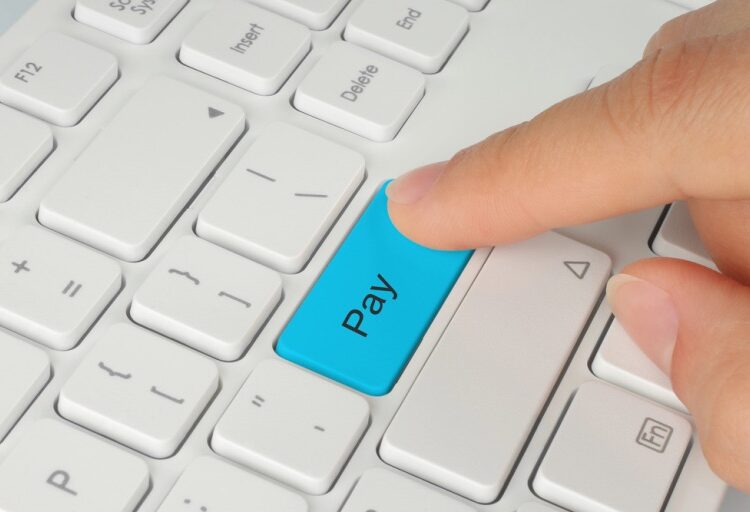Choosing between Square and Stripe can be a critical decision for business owners looking for the right payment solution. Both platforms offer unique features and functions that can make a significant difference in the efficiency and convenience of transactions.
Square is suitable for small businesses, providing a simple way to process card payments, while Stripe provides powerful tools for online businesses with more complex needs. In this article, we will look at the key differences between the two services to help you make an informed choice with the help of Rates – review of international rates at a glance.
Square: Features and Benefits
How many times has it happened to you that you have no cash in your wallet, and the seller treats the lack of a payment terminal as something normal? How many times, when running your own business, have you thought about a terminal, but the cost of its purchase and operation was too high?
Square – a device for credit card payments. For the benefit of buyers and sellers, there is already a very successful Square company in the USA – squareup.com, which was recently backed by an investment from a strong financial player called Visa. Square has already provided 500,000 attachments that allow charging and additional handled transactions totaling 66 million dollars in the first quarter.
Diving deeply into statistics, in 2019, Square’s annual net revenue amounted to 4.71 billion U.S. dollars. During the fourth quarter alone, the company generated over 1.31 billion U.S. dollars in net revenue.
Benefits of Square
- Profitability: Square’s business model is to receive a margin of 2.75% from each transaction. Simply put, the amount of each transaction minus the margin is credited to the merchant’s account the next day.
- The full version: The process includes payment, transaction notification, and communication with the user.
- Accessibility: Square can be set up as a payment method in the following countries – USA, Canada, Australia, UK, Ireland, France, Falkland Islands, and Japan.
Square Apps
Square’s business relies heavily on two programs. One of the key products is the Square Cash application, created in 2013. It allows users to send and receive payments for free on their smartphones. It is available for download on Android, iOS, or desktop browsers.
After connecting to the payment card, transfers are sent directly between the recipient and the sender – without intermediaries in the form of service providers, i.e., companies that carry out transfers.
Square Inc. also offers Square Point-of-Sale – an application that allows entrepreneurs to process payments via mobile devices. The first application allows users to make card payments in the case of direct sales. The second one helps small and medium-sized businesses (restaurants, shops) create sales points.
The system does not provide for subscription payments, and business transaction fees are 2.75%. Transaction value (this applies to payments made by inserting the card into the reader, tapping, or swiping) and 3.5 percent. plus 15 cents per transaction made by manual entry. The money flow is usually immediate, but it may take up to two business days.
Stripe: Features and Benefits
Stripe is a simple payment processor built for online businesses, whether it’s a website or an app. It offers a checkout option that can be added to your online business solution. Website developers use it to create custom checkouts for companies that have multiple sellers and operate internationally.
So it is a real solution that has a technical learning curve that is best suited for any tech startup or company that has a developer.
If you don’t have a developer on your team, Stripe may not be an option. This is because you need a trained person to get Stripe working on your website. Stripe online can be a bit difficult, even for a decent developer.
Benefits of Stripe
- The flat rate is transparent and competitively priced
- Global scalability
- There are no monthly contracts
- Completely customizable pricing checkout solution
- Customer do not leave the website when finalizing their purchase
- There are many support channels
- It is PCI-compliant
Key Differences Between Square and Stripe
Strap Configuration
Setting up Stripe payments for your website may seem simple or complex. It depends on what you need your payment gateway for. This is actually one of its benefits.
Accepted Payment Types
Stripe helps its users by offering various types of payments. Here is a list of the ones you can accept on your online store using Stripe:
- Credit cards
- Debit cards
- International cards
- ACG direct debit and credit
- Bank transfers
Stripe Tools and Services
Stripe offers the technical, anti-fraud, and banking infrastructure necessary to support online payment systems. Stripe is quite versatile, even though it doesn’t have the same features as Square. For example, it integrates dozens of shopping carts, such as Easy Digital Downloads, X-cart, and Ecwid.
With Stripe, you also get help with the entire range of business operations that are part of their service. Stripe allows a company (even one located outside the US) to incorporate US operations. It also offers them a digital US bank account.
Additionally, Stripe accepts ACH payments. This may be a strange concept if you’re starting out. To further explain, ACH (Automated Clearing House) is an electronic network used for bulk financial transactions in the US. Its main use is for large volumes of business transactions.
Conclusion
Square and Stripe represent different approaches to payment processing, each with its own advantages and disadvantages. Square is ideal for small and medium-sized businesses that need a simple and affordable card payment solution with low fees and easy setup.
Stripe, on the other hand, offers scalable and flexible solutions for online businesses willing to invest in technical integration to gain more features. We at Rates emphasize that understanding your business needs will help you determine which platform best suits your requirements, ensuring that your payment processing is efficient and convenient.




